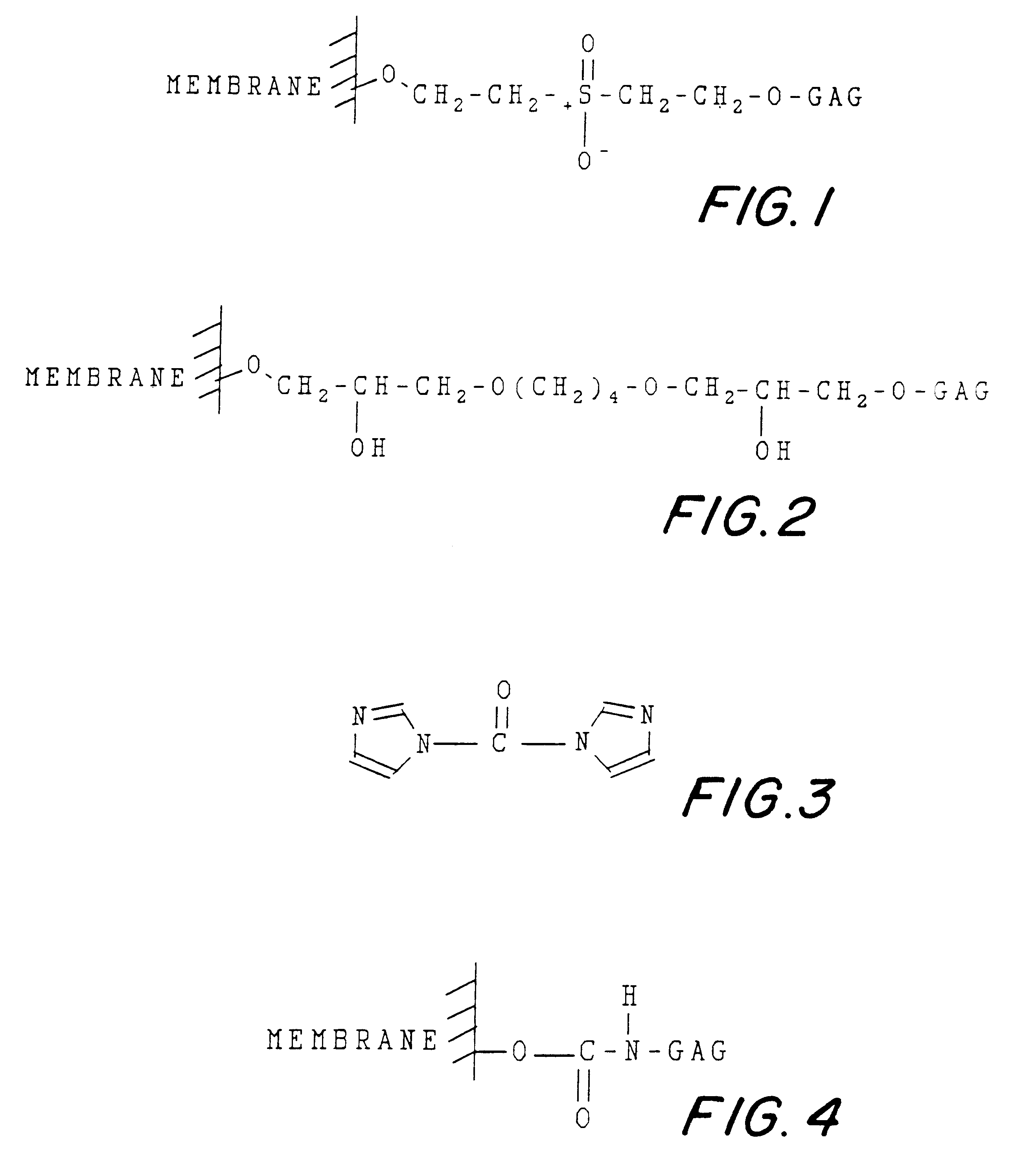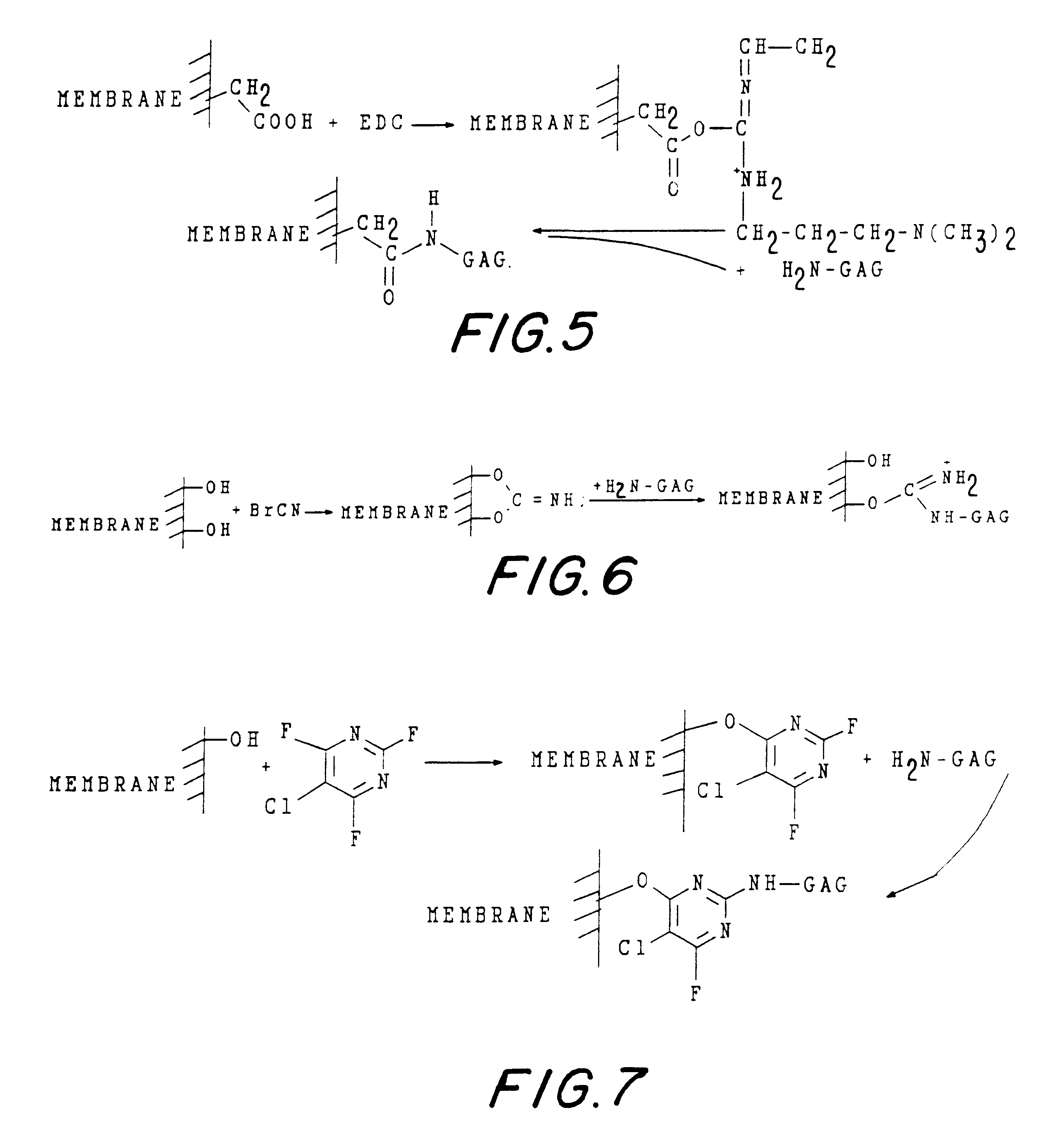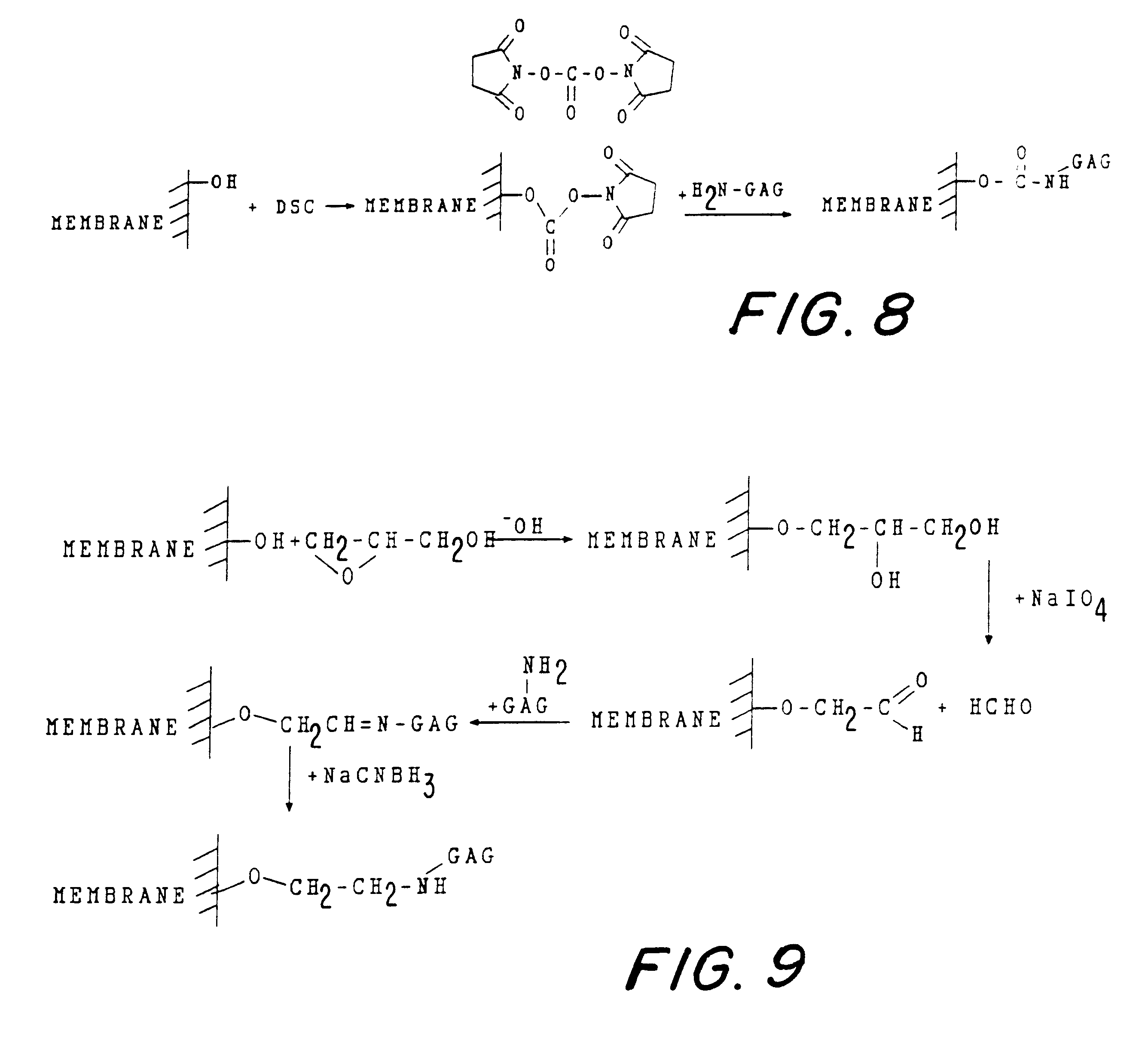Non-immunogenic, biocompatible macromolecular membrane compositions, and methods for making them
a macromolecular membrane and composition technology, applied in the direction of sugar derivates, prostheses, bandages, etc., can solve the problems of inability to retrieve after, lack of reliability of biocompatible implants, and inability to withstand in vivo implantation, so as to minimize the effect of antigenic contaminants
- Summary
- Abstract
- Description
- Claims
- Application Information
AI Technical Summary
Benefits of technology
Problems solved by technology
Method used
Image
Examples
example 1
Activation of the Cellulose Membrane by Divinyl Sulfone
Commercially available cellulose membrane pieces measuring 5.times.5 cm, each weighing 30-50 mg (dry weight) were thoroughly washed in distilled, deionized water and suspended, each, in 8 ml 0.5 M sodium carbonate, at pH 11. Commercially available divinyl sulfone was added dropwise while under continuous agitation, until 800 .mu.L of total volume was completed (10% of initial liquid volume). This was carried out in a well ventilated hood, and the operator wore gloves due to the toxicity of divinyl sulfone.
This activation reaction was allowed to proceed, under agitation, for 1 to 6 hours, at room temperature. At 4 hours, the activation could be complete but, allowing it to continue for 6 hours was not harmful and could ensure better activation. After that, the activated membrane was treated with repeated washings using water. Ten washes could suffice. The activated membrane could be used immediately for the coupling reaction, or ...
example 2
Coupling of GAG to the Activated Membrane
The activated membrane from Example 1 was suspended in 8 ml of 0.5 M sodium carbonate, pH 11, containing GAG chondroitin-6-sulfate, as a solute. The concentration was from 40 to 150 mg / mL. A concentration of 100 mg / ml could be used for sufficient coupling with 5.times.5 cm and divinyl sulfone activated cellulose membrane. The mixture was maintained under agitation for a minimum 24 hours, at a temperature about 4.degree. C. The coupled membrane was then subsequently washed with 0.5 M sodium carbonate and water. The excess active groups that might still be present on the cellulosic membrane were now blocked by suspension in a 0.5 M sodium carbonate solution containing 5% (v / v) 2-mercaptoethanol and kept agitated for 2 hours.
Finally, the membranes were repeatedly washed with 1.0 M sodium chloride and water until the membranes were free of salt. These membranes could be stored under water, with 0.02% sodium azide, or can be dried under acetone an...
example 3
Activation of the Cellulose Membrane with Butane-Diol-Diglycidyl-Ether (BDE)
Membrane pieces of size 5.times.5 cm were washed with water and suspended in 0.6 N sodium hydroxide, 4 ml, containing 0.2% (w / v) sodium borohydride, under agitation.
An identical volume of BDE was added slowly, under continuous mixing; the mixture was left under agitation for at least 12 hours at room temperature. The activated matrix was then repeatedly washed with 0.1 M sodium chloride, HCl at pH 3 and water.
PUM
| Property | Measurement | Unit |
|---|---|---|
| volume | aaaaa | aaaaa |
| thickness | aaaaa | aaaaa |
| thickness | aaaaa | aaaaa |
Abstract
Description
Claims
Application Information
 Login to View More
Login to View More - R&D
- Intellectual Property
- Life Sciences
- Materials
- Tech Scout
- Unparalleled Data Quality
- Higher Quality Content
- 60% Fewer Hallucinations
Browse by: Latest US Patents, China's latest patents, Technical Efficacy Thesaurus, Application Domain, Technology Topic, Popular Technical Reports.
© 2025 PatSnap. All rights reserved.Legal|Privacy policy|Modern Slavery Act Transparency Statement|Sitemap|About US| Contact US: help@patsnap.com



